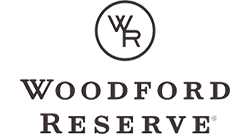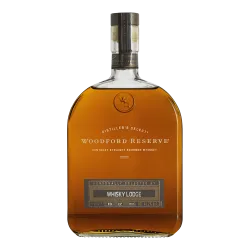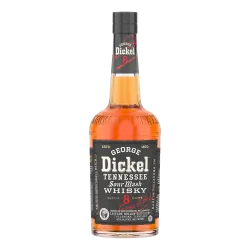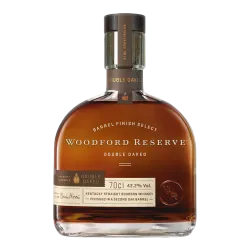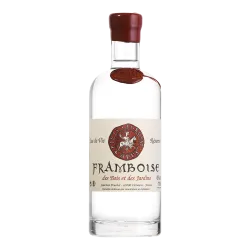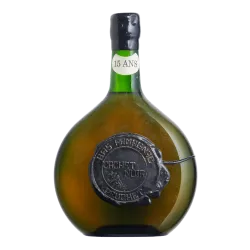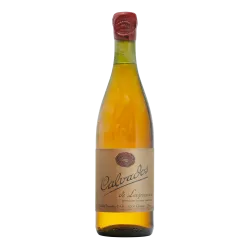Bourbon is an American whiskey made from at least 51% corn. It is aged in American white oak barrels, previously charred. It must be at least 2 years old to obtain the designation.
There are 66 products.
United States, Kentucky Straight Bourbon
- 100 cl
Bourbon Whiskey: Types, History, and Tasting Guide
Bourbon: An Icon of American Whiskey
Bourbon whiskey is much more than just a spirit — it’s a symbol of American craftsmanship, rooted in traditions dating back to the 18th century. Mainly produced in Kentucky, bourbon is distinguished by its rich, caramelized flavors influenced by its corn base and aging in new charred oak barrels.
What makes bourbon unique compared to other whiskies, like Scottish Scotch with its peaty and iodine notes, or whisky of Japan, known for balance and finesse?
What Defines Authentic Bourbon?
Bourbon is a strictly regulated American whiskey ensuring authenticity and quality. Unlike Scotch, which can use different grains and various barrels, bourbon must follow precise rules.
Corn-Based Mash Bill
Bourbon must contain at least 51% corn, which gives it naturally sweet and rounded flavors. The remaining grains, called the "mash bill," usually include rye (for spice) or wheat (for softness), plus malted barley to aid fermentation.
Aging in New Charred Oak Barrels
Unlike Scotch, bourbon must be aged in new charred oak barrels. This process adds classic notes of vanilla, caramel, and spices. The longer the aging, the deeper and richer these flavors become.
Controlled Distillation and Bottling
Bourbon must be distilled at less than 80% ABV, barreled at no more than 62.5% ABV, and bottled at a minimum of 40% ABV, preserving its rich flavor profile.
Famous Bourbon Distilleries
Kentucky is the birthplace of bourbon, with several legendary distilleries:
-
Jim Beam: The classic benchmark Founded in 1795, Jim Beam is one of the world's best-known bourbons. Their 4-year-old bourbon is a perfect introduction with notes of vanilla and oak.
-
Buffalo Trace: Artisan excellence Home to sought-after bourbons like Eagle Rare, known for exceptional aging and rich, woody aromas.
-
Wild Turkey: Bold and intense Known for its high-proof bourbon bottled at 101 proof (50.5% ABV), offering intense caramel and spice flavors.
-
Maker’s Mark: The soft wheated bourbon Unlike traditional rye bourbons, Maker’s Mark uses wheat in the mash bill, giving it a sweeter, smoother character.
Bourbon Styles Explained
Bourbon comes in several styles,french whisky, japanese whisky, scottish whisky, each offering unique tasting experiences:
Straight Bourbon: The Pure Tradition
A Straight Bourbon is aged at least 2 years in new charred oak barrels with no additives. It’s the purest form of bourbon adhering to strict U.S. regulations.
-
Popular brands:
-
Jim Beam: smooth and approachable
-
Buffalo Trace: balanced vanilla sweetness and spice
-
Evan Williams: great value for entry-level bourbon
Bottled-in-Bond Bourbon: A Quality Guarantee
This label originates from the Bottled-in-Bond Act of 1897 to ensure purity and quality. Requirements include:
-
Produced by one distillery in a single season
-
Aged at least 4 years in new oak barrels
-
Bottled at 50% ABV (100 proof)
-
Federal regulations compliance
-
Notable examples:
-
Old Forester 1897 Bottled-in-Bond: rich spices and caramel
-
Henry McKenna 10 Year Bottled-in-Bond: complex and long-lasting finish
High-Rye Bourbon: Spice and Power
Featuring a higher percentage of rye grain in the mash bill, High-Rye bourbons are spicier with a drier finish, perfect for those seeking bold character.
-
Notable brands:
-
Bulleit Bourbon: black pepper and cinnamon notes
-
Four Roses Single Barrel: intense and spicy, longer-aged
Wheated Bourbon: Smooth and Sweet
Replacing rye with wheat, wheated bourbons are softer and sweeter, with flavors of caramel, vanilla, and honey.
-
Key brands:
-
Maker’s Mark: iconic smooth wheated bourbon
-
W.L. Weller: highly sought after, nicknamed the "poor man's Pappy Van Winkle"
Single Barrel Bourbon
Unlike blended bourbons, Single Barrel comes from one selected barrel, making each bottle unique with subtle flavor differences.
-
Popular examples:
-
Blanton’s: the first commercial single barrel, prized for balance
-
Elijah Craig Single Barrel: powerful with deep caramel and vanilla notes
Small Batch Bourbon
Small batch bourbons are crafted from a carefully selected blend of barrels to create complex flavor profiles in limited quantities.
-
Popular brands:
-
Four Roses Small Batch: elegant, balanced spice and fruit notes
-
Woodford Reserve: bestseller with complexity and a lingering finish
Which Bourbon Should You Choose?
-
For a classic, balanced bourbon, try Buffalo Trace or Jim Beam.
-
For a spicier, bolder bourbon, go with Bulleit Bourbon or Four Roses Single Barrel.
-
For smooth and sweet bourbons, Maker’s Mark is a great choice.
-
For a unique tasting experience, try Blanton’s Single Barrel or Booker’s Small Batch.
No matter your experience level, there’s a bourbon for everyone!
How to Properly Taste Bourbon
Choosing the Right Glass
The glass impacts the aroma perception. The Glencairn (tulip-shaped) glass concentrates aromas for nosing, while a tumbler (Old Fashioned glass) is casual and great for sipping. Avoid wide glasses that dissipate aromas.
Color: Age and Maturation Indicator
A pale golden bourbon is usually younger and lighter. Dark amber hues indicate longer aging with richer woody and spicy notes. Watching the “legs” (or tears) on the glass helps assess richness and alcohol content.
Nosing the Bourbon
Gradually inhale to detect sweet notes like vanilla and caramel, woody tones like oak and spices, and fruity hints such as apple or cherry. Letting bourbon breathe enhances its aromatic complexity.
Tasting in the Mouth
Bourbon unfolds in three stages:
-
Attack: first impression—sweet, woody, or spicy
-
Mid-palate: reveals complex flavors like caramel, oak, and spices
-
Finish: can be long and lingering or dry
Each bourbon style expresses distinct profiles: wheated bourbons (Maker’s Mark) are soft and sweet, high-rye bourbons (Bulleit) spicy and dry, while bottled-in-bond bourbons (Old Forester) are rich and intense.
Can You Add Water to Bourbon?
Adding a few drops of water can reduce alcohol burn and reveal hidden aromas, especially in higher-proof bourbons (50% ABV+). Taste neat first, then with water to compare.
Ice and Bourbon: Aroma Dilution
Cold reduces flavor perception. Use whiskey stones or large spherical ice cubes that melt slowly to avoid dilution. Adding ice suits robust, high-proof bourbons.
Food Pairings with Bourbon
-
Grilled or smoked meats (ribs, bacon): Pair with woody, spicy bourbons like Wild Turkey or Knob Creek
-
Dark chocolate: Complement caramel and vanilla notes in Woodford Reserve
-
Aged cheeses: Match with soft, round bourbons like Maker’s Mark
-
Sweet desserts (pecan or apple pie): Balance with honey and maple notes from Buffalo Trace
Where and How to Enjoy Bourbon
Tasting bourbon in a quiet environment enhances aroma appreciation. An ambient temperature of 15-20°C is ideal. Keeping a tasting journal helps refine your preferences. Combine bourbon with comfort and good music for the perfect experience.
Bourbon embodies the spirit of American whiskey with its rich history and unique production process. Whether soft, spicy, or complex, bourbon offers diverse flavors and styles to satisfy every palate.

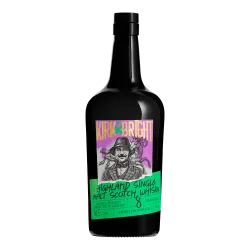
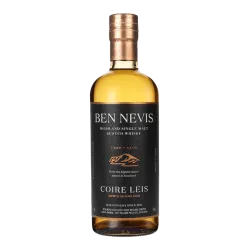
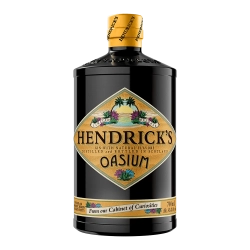

.png)
